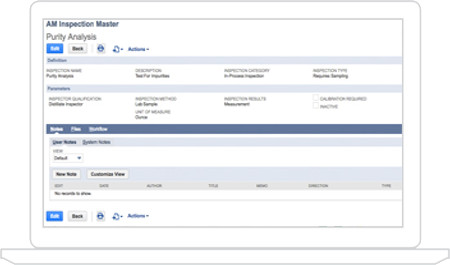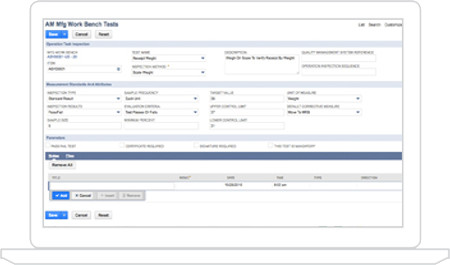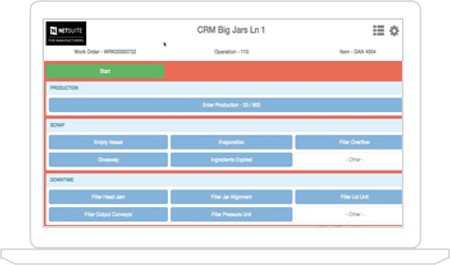Quality Assurance
Set up inspection plans, track test results and evaluate vendors to ensure optimal quality
Designing and manufacturing a product of high quality doesn’t happen by accident, it requires a company-wide commitment. NetSuite’s Quality Management solution has been designed to help you deliver the highest quality in your products with minimal overhead. Quickly and easily define the tests you want to perform, set parameters to evaluate the results, apply those to the relevant items and operations for receiving and in-process testing. NetSuite will automatically tell you what to test, collect the results use workflows for dispositioning.
Features
Test Definition
NetSuite uses a master list of inspection profiles that are defined in advance that specify the type of inspection / test that is to be performed, acceptable limits, the minimum qualifications of the inspector and type / category / method of inspection. Additionally, we can denote whether calibration is required where the test involves equipment.
Key Benefits:
- Centrally managed list of tests / inspections
- Enforce minimum Inspector qualifications
- Capture measurements and compare to pass / fail limits

Receiving & In-process Inspections
Tests that are to be performed on an item can be performed on demand, upon receipt and during the process of manufacturing. As the tests have already been defined, they are easily attached to the item or operation to ensure compliance with your company’s quality control procedures. Items that fail the inspection can be moved to a hold location for further processing.
- Enforce compliance to minimum quality standards
- Automatic prompting for inspection / test results
- Workflow based handling of non-conforming materials

Data Collection
Establishing the test / inspection criteria and when they are to be performed are critical steps, but providing a user friendly way to capture the results is vital. In many cases this takes place whether in the receiving area or on the shop floor and so NetSuite’s tablet interface provides a convenient way to capture and process test results regardless of the environment or location.
- User friendly, interactive application
- Device agnostic—runs on any browser based tablet
- Real-time processing of inspection results





























